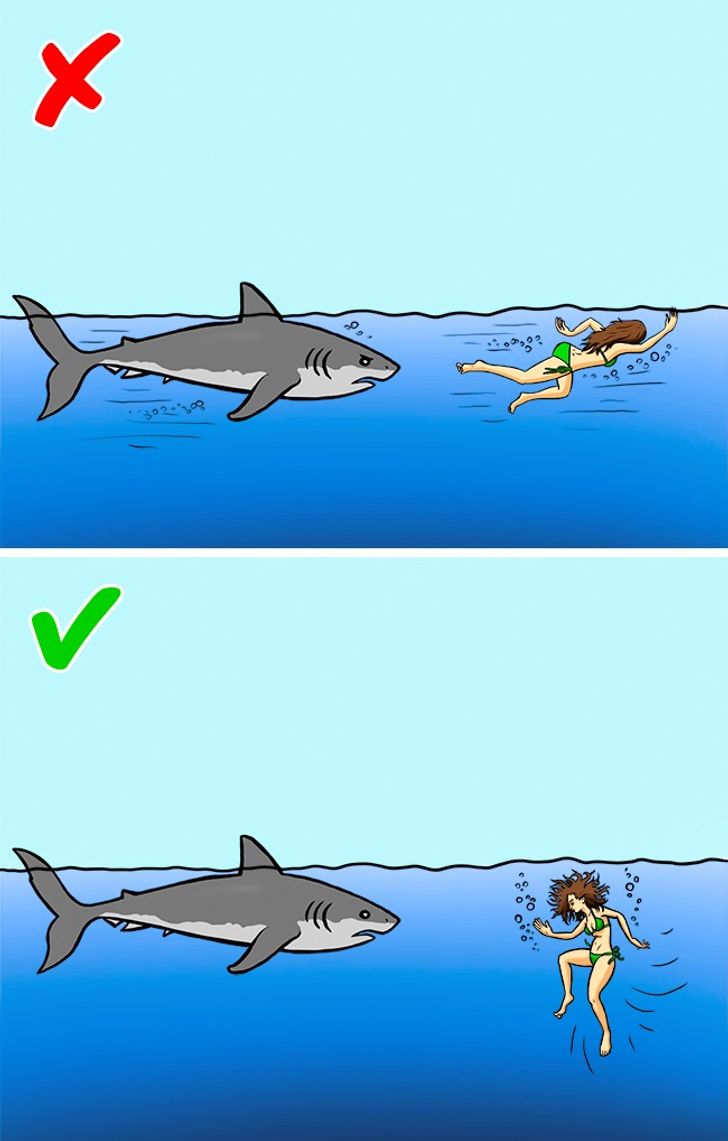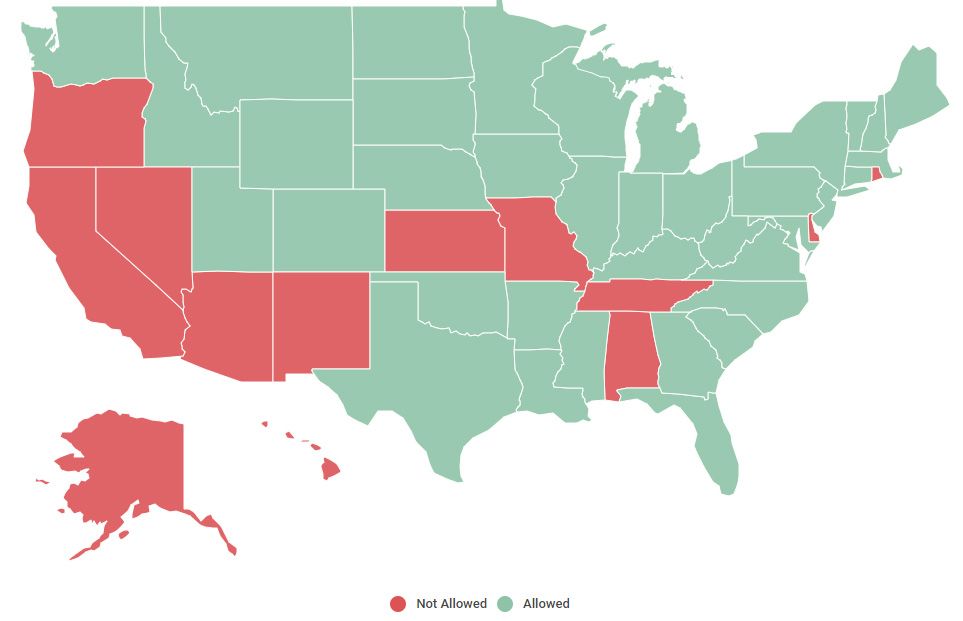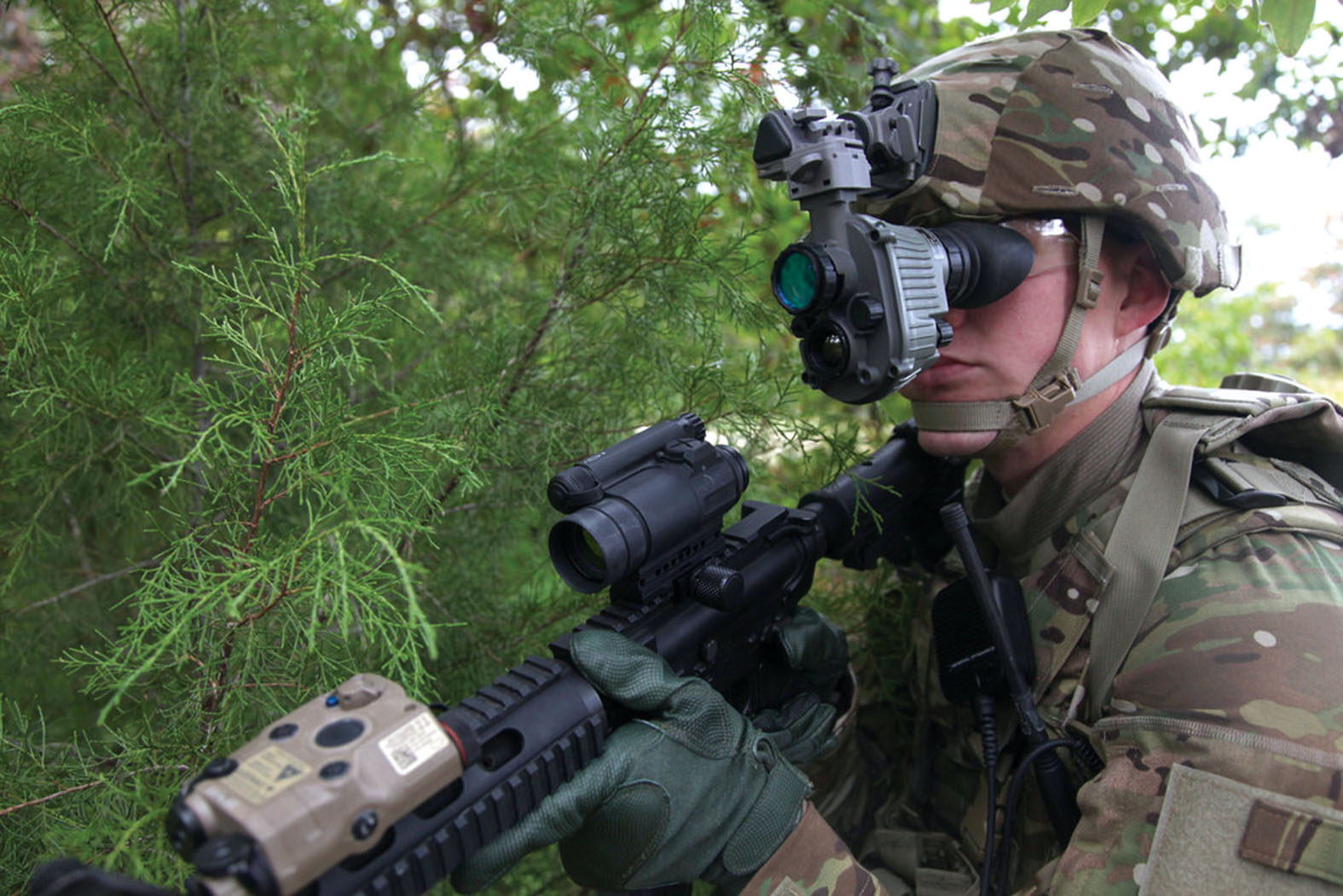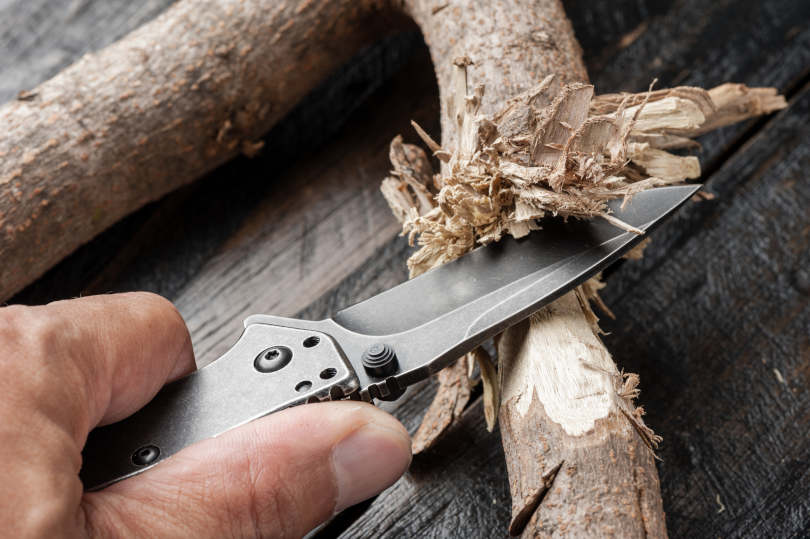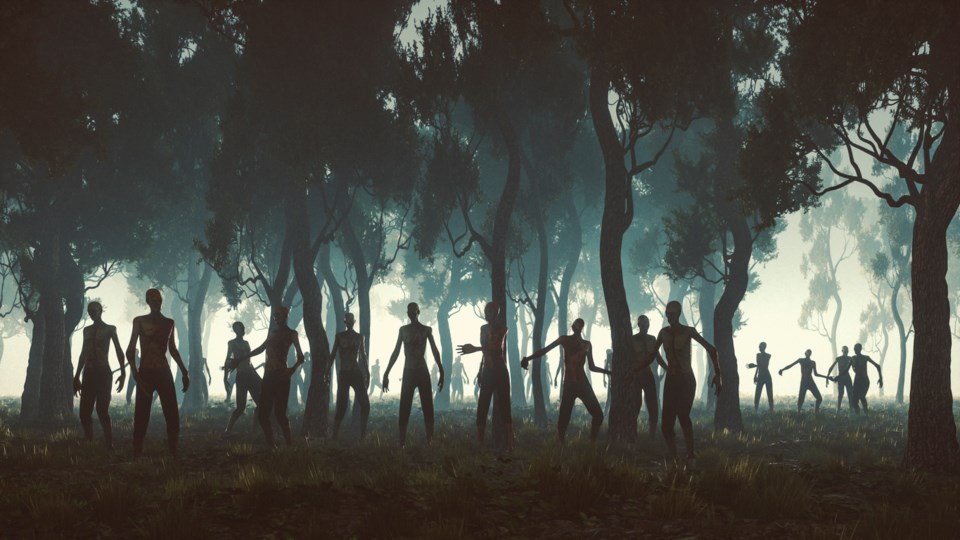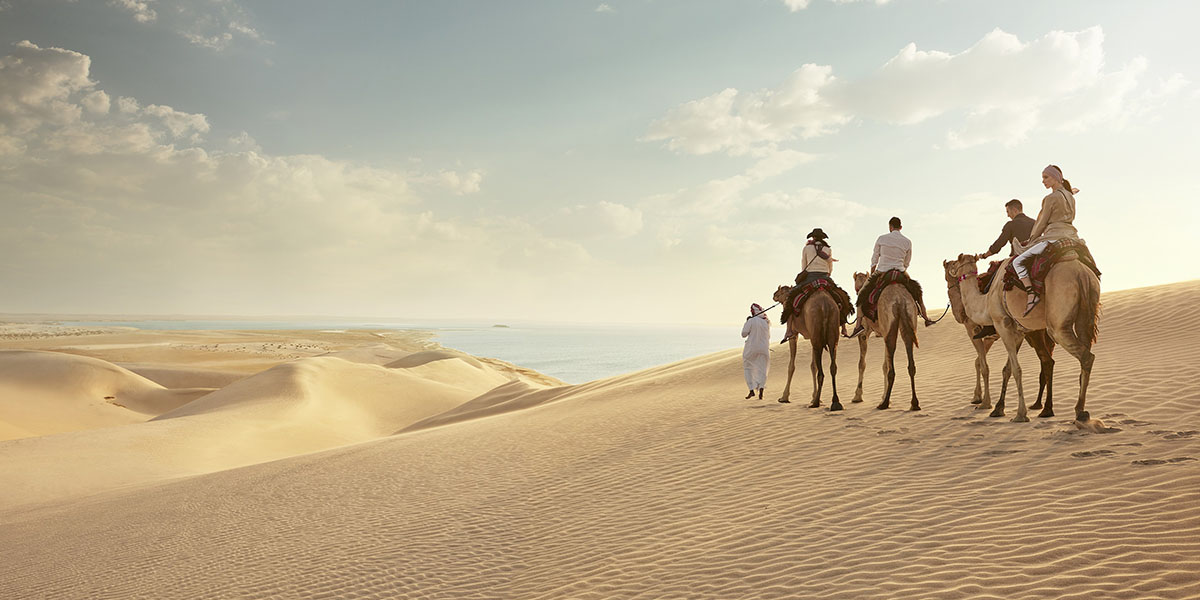Deserts are perhaps one of the most difficult places to live. The main characteristic of deserts is that they are extremely dry. Because humans need so much water, surviving in deserts is very difficult. Not only is it difficult for humans to survive in deserts - it is also hard for animals, plants and other forms of life to live. This, in turn, makes it even harder for human life to persist because there is always risk of running out of food.
It is surprising, then, that deserts cover about one fifth of the world's land! Furthermore, over one billion people (one seventh of the world's population) live in deserts! How is this possible, and how do people overcome the challenges?
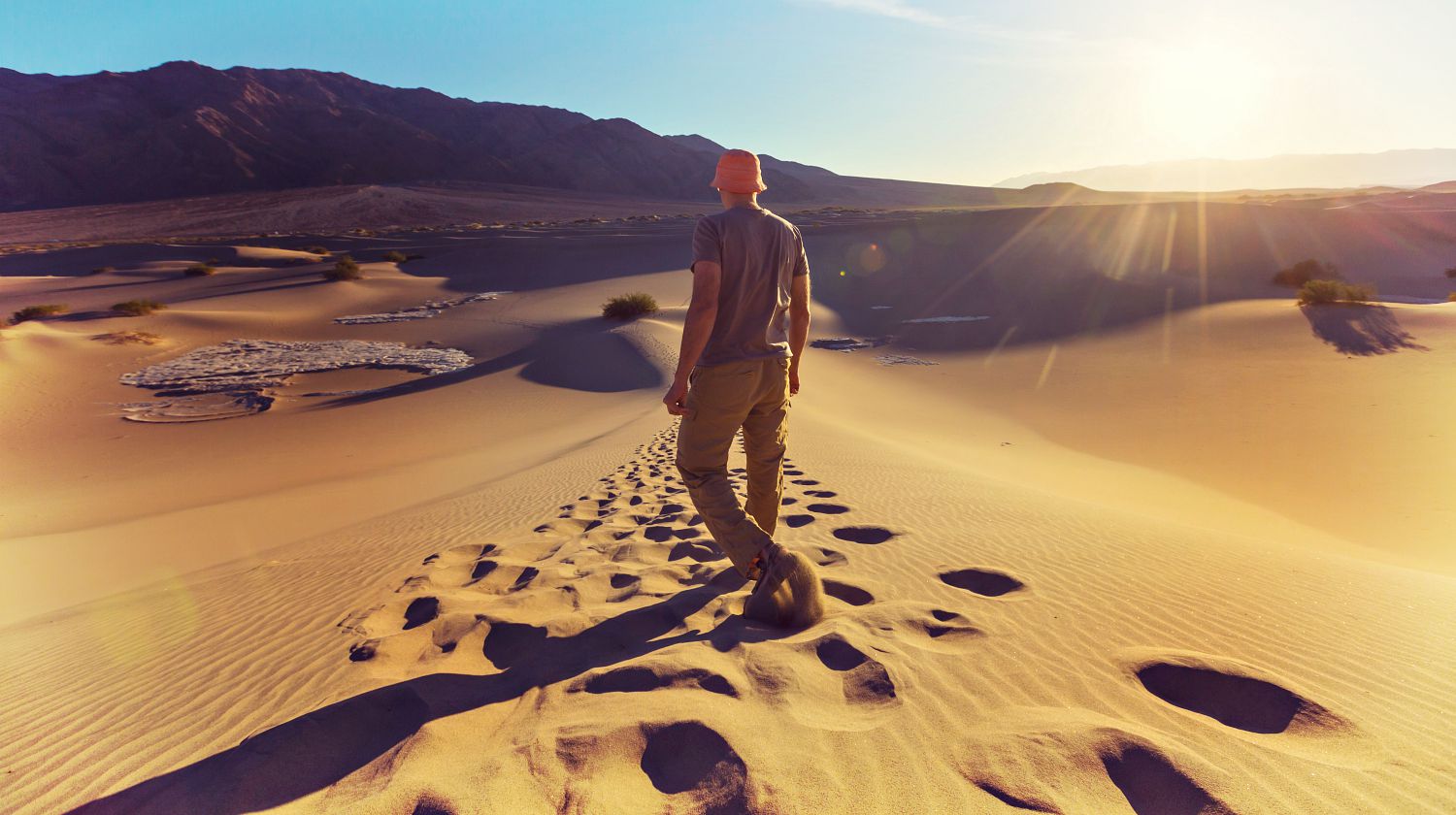
When you're stranded amid wide stretches of the desert without anything but the shirt on your back, it's important to know where to get water, how to conserve your energy, and what to do about getting back to civilization. Continue reading this section to learn these essential survival skills for making it out of the desert alive.
To survive in the desert, it is essential to remember 5 fundamental points: remain calm, conserve energy, find water, find cover, and stay away from dangerous wildlife. While there is more to consider than these fundamentals, they will all greatly increase your chances.
14 ESSENTIAL DESERT SURVIVAL TIPS
1. STOP and Think
To survive, use the Boy Scouts mnemonic device of "STOP," which stands for "Stop, Think, Observe, and Plan." They apply to all people equally.
You've just discovered that you are stranded in the desert. You're unsure about whether or not rescue will be arriving. Here is the list of survival actions:
- Collect drinking water.
- Find a shelter during the day.
- Wait to see if rescue arrives.
- Travel at night in one direction until you reach civilization.
- Find water to avoid dehydration (solar stills won't work in desert environments)
- Find at least one source of food
- Attract the attention of people who may be nearby
And more! In our article, you will find other essential life-saving tips on how to survive in the desert. Apart from finding enough to drink and searching for a source of food to survive in the desert, read about crucial things in our article and you will be prepared to face the adverse side of mother-nature better off.
2. Don't Panic
In any emergency situation, panic is the worst companion. It distracts the attention, blunts reasoning, and can lead to the lethal end. Panic control is what you should focus on to be organized and collected to keep up with the hardships of desert survival. Tips to suppress panic depend on the personality of the stranded one and don't apply universally. However, these skills should be nurtured and pointed out to meet the tough requirements of surviving in the desert environment. You should take constructive steps, act according to the plan that you should outline, and be cool, calm, and collected.
Here is something that can help you get agile and upbeat:
- You cannot change the situation. This is not your fault. Conditional sentences will lead to no avail: you cannot change the past either.
- Try to engage in some meaningful activity directed to your rescuing or finding the way out. The uniformity of the task will brighten up the gloom of the situation. The approach helps to stop thinking about the drawbacks of the situation and focus on the familiar activity.
- Think yourself out. Consider what you have at your disposal. Think about how you could use it with efficiency and effect. Usual items you carry with you can be of great assistance.
- Figure out the measures you need to take to help yourself out. Write them down and follow accordingly, but adjust depending on the situation.
- Do not delay unless you want to die quicklier. Everything crucial needs to be done at once, but remember about saving your energy. Do not waste your time on something you don't know how to do properly and to some avail.
- A practical approach will help you survive in the desert for as long as possible.
- Keep your brain in good condition: it is a crucial measure to survive in the desert if you act reasonably, your chances to survive increase.
Head to the next part of our article to discover everything people need to save their health and sustain life in the desert.
First aid
If you have been injured, it is highly advisable to give yourself first aid. Otherwise, it will be extremely challenging a task to survive in the desert. You need to have your body in a normal condition to keep moving and active to survive. If you have any medicines like bandages, balms, or sunscreen, use it to the max. Unless you know that the rescue is coming to you, stay where you are to avoid extra movements in the unknown direction.
3. Decide whether to stay in place
Sufficient liquid supply will ensure your well-being for some time until the help arrives. If you a certain that someone will come to save you soon, it is the best chance to be saved.
Travelling can be energy-consuming and dehydrating. The water loss will entail a further decrease in your state of health.
However, if your water supplies are scarce, look for some more water as fast as you can. According to research, humans cannot sustain life for more than three days without a drink of water.

4. Consider Dangers
Most importantly, keep hydrated for as long as possible. Do not underestimate your needs for water in your packing-up stage as many people do. You will be thankful to yourself afterward.
Do not try to be over-rationing with your water supply: focus on finding the new ones.
Here are the signs you need to take another portion of water immediately:
- feeling dizzy
- losing consciousness
- dark and smelly urine
- dehydrated skin
Stop walking if you feel exhausted. Look for a shady area to have a rest and do the following:
- Take off your clothes
- If you have a slightly salty drink, take a small gulp
- Put a wet piece of cloth on your body to cool down
- Intense heat can lead to a heart stroke, so avoid moving about in the daytime without the shelter
Animal Factor
- You should not be afraid of most animals and reptiles in the desert because they will care to steer clear from you, frightened. It can be different about group species.
- Avoid accidents and be carefully scan your whereabouts while walking. Go round to research the vicinity and know what to expect.
- In small, hard-to-reach caverns can hide scorpions and spiders, some of them, big and venomous. Use a stick to check out such spaces. A killer beehive is another danger to be aware of and keep away from.
- Watch out for dangerous insects and snakes.
Beware of Spikes
Cacti are simple to notice and to avoid bumping into. Do not step on some spiky burr from a cactus. These can spread infectious diseases and are to be avoided.
5. Finding Water
Your priority should be to find a source of drinking water. A human can survive over three weeks without food, but only 3 to 4 days without water. Any attempt you make at surviving in the desert will fail unless you can keep yourself properly hydrated.
Common sources of water:
Dried-Up River Beds:
If you can find a dried-up riverbed, check to see if the ground is still damp. Water can be easily acquired by digging a hole in the surface of the river bed.
Morning Dew:
Collect any dew that forms on cacti in the early morning before the sun rises, and it evaporates. Every drop counts, and while this method doesn't provide much, it is still essential that you add whatever water you can to your reserves.
Collect Rain Water:
Catch rainwater with any materials that can be laid out flat over a wide surface area. Use the material to funnel the water into your container.
Cactus Pulp:
Cacti can be a valuable source of water. By cutting open the cactus, the inside pulp can be sucked out and extracted to provide a water source.
Solar Water Still:
If you have a sheet of plastic or tarp (no holes) available, then make a solar water still.

How to Create a Solar Water Still:
Step 1: Dig a hole in the sand or dirt that is deep and wide enough to hold your container.
Step 2: Place the container in the center of the hole.
Step 3: Fill the gaps surrounding the container with anything wet, such as cacti pulp, plants, or even urine.
Step 4: Place your plastic sheet over the hole.
Step 5: Anchor the sheet in place with larger rocks around the edges of the hole.
Step 6: Place a small rock in the center of the plastic, just over the container.
Step 7: Condensation will occur on the underside of the plastic and run down to the center. It will drip into the container filling it with distilled drinking water.
6. Find a Shelter
Shelter plays an important role in keeping your body temperature regulated.
When it's daylight, try to stay out of the sun and find shelter in the shade. Large rocks or hanging cliffs can help to block any direct sunlight.
The natural tendency in a hot environment is to remove clothing but refrain from doing so. Your clothing will keep you from perspiring and losing hydration. It will also protect your skin from sunburn.
If you have a selection of clothing, always opt for lighter colors. Darker colors will absorb more heat.
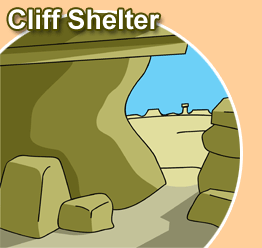
7. Build A Desert Shelter
While in the desert, you can face flash floods in lower areas. Choose a hill and create your temporary dwelling there to avoid flooding. Try to work with the materials at your disposal like stones and rocks: it will help you save energy.
You will have to dig up to make a shelter. It is recommended that one should do it before the sun is in full power to avoid sunstrokes.
- Find a flat piece of ground between two sand dunes
- Dig two feet deep
- Place a handful of sand or dirt around the top brim of the hole
- Plant sticks at each corner of the dug-out
- Stretch out the darkest piece of cloth you have to make a sort of roofing
- Ensure ventilation by leaving space between the trench and the cover.
- Make the second roof out of a light material to reflect the light.
Trenches under the sand level are known to be cooler than the air above. If you build your shelter properly, it will increase your chances of survival greatly. Extreme conditions of the desert will be more bearable inside of such a dwelling.
Read on to find out how to find food, what desert plants are edible, and what animals you can catch in deserts like the Sonoran desert or areas around the Grand Canyon.
8. Finding Food In The Desert
It is less likely to find something to munch on in hotter and more barren deserts. When you choose your travel area, try to avoid greenless places, choose safer routes, and take tools or weapons with you.
Increase your chances to find anything edible by going towards woods and areas with rich vegetation. Snakes and lizards can be a solid source of protein if you manage to catch and cook them. You can also bank on rabbits and smaller animals or birds: the success will depend on your ability to catch them. Do not forget about insects, which can be nutritious while looking repulsive. Avoid hairy ones and overly bright-colored.
Besides, remember that as you eat, you need more water to wash it all down. Not eating can help you get along without water for a long while. Use your brain to the max and be practical.
Edible Insects
Grasshoppers, ants, tarantulas, and other insects can be edible: you only catch and cook them. Familiarize yourself with many important tips on getting at these by reading from here: Top 10 Edible Insects in North America.
Edible Plants In The Desert
Collect insects, reptiles, and snakes instead of trying to find edible plants in the desert survival situation.
Your aim is to get away as fast as possible, so you should use high-efficiency methods to survive. And it concerns the choice of meals as well.
Focus on survival and hunt or trap animals. Eating them will give you more energy to go on than any plant. If you fail to find them, try eating cacti fruits: most of them are edible, but never try eating any other part of cacti— it is highly likely they are poisonous.
Eating Snakes and Reptiles
Do cook all animals and reptiles you before you eat them. There are such bacteria as salmonella, carried by reptiles in abundance. It will be a failure to eat one of these in the desert survival situation. DO not forget about your hygiene and wash your hands and meals.
Catching Snakes
You can do it by using a long stick with another branch on the edge of it. Catch the snake in between the sticks, and avoid their bites by using long sticks. The head should be cut off to minimize the risk of bites. Beware of the dead snake's fangs: dead as they are, and they can cause harm by poisoning you. Bury the head as deep as you can.
Study The Terrain To Find Wildlife
You definitely need to find a shade, where you can find some species of wildlife like snakes or lizards. You can find familiar fruit and eat them or drink their juice. Green areas almost always house some species of fauna.
If you are lucky, the desert you are lost in can be home to rabbits and various small varmints. Watch what predators like hawks and coyotes eat: it is still fresh and edible. Scare them off and take their prey by force if you need it. In some desert areas, such things are easy to do. If not, search the area for rabbit holes. You will likely find rabbits if they inhabit the desert. Kill lizards with stones or sticks. Before the heat is intense, they hide under the flat rocks and are easy to get at. Find snakes taking sunbathes on a hot rock and kill them easily. Be careful and avoid bites.
Cooking
If there is a water source in your vicinity, you are the lucky one. Make a pit and fill it with water. Build a fire to heat stones and put them into the water to start the boiling process. Out everything edible, you could find into the pit and cook for a long time to ensure there are no bacteria or venoms.
You can make a sort of an oven from rocks you can find around you. Flat rocks will serve as a means of an oven, being made into a box-like structure. Leave a small opening to watch the process. Make a fire nearby and wait until the meal is well-cooked.
9. Make Fire
While some people consider fire odd in the context of the desert, it is still a great tool to use to survive in the desert. You can signalize for help, cook meals, warm yourself during the cold nights, and frighten off wild beasts eager to attack you during your sleep. The procedure of making a fire can be a good distraction from the misery of the situation. You can utilize Friction methods such as the bow and drill if you know how to handle them. Here are some tips on how to survive in the desert by making a fire.
Structure
Step 1: Pick up small pieces of dry wood and sticks
Step 2: make a tepee shape out of small twigs and place some tinder in the middle
Light It Up
Glasses or anything from glass will help a lot: use it to concentrate the sunrays on the tinder to light it up. Then blow gently when it starts smoking.
The alternative to this method is to use the "Plow":
Plow Method
Step 1: Find softwood. and make a groove in it
Step 2: Put pieces of tinder on the side you will light up
Step 3: plow the end up and down with a hard stick
Step 4: The small parts will begin to burn. Blow gently on them to fuel the fire with oxygen
Step 5: When it catches, put more twigs to make it grow
There are also such tools as a bow drill to make yourself with some materials at your disposal. It is better to do a small research about other methods before you travel through the desert.

10. Traveling/Resting
It's important to ensure that while you travel and look for the next town or civilization that you do not exhaust your energy or lose hydration through excessive perspiration.
Travel At Night
Traveling during the day will expose you to the sunlight. This will increase your body temperature, and as a result, you will sweat more, resulting in a loss of hydration. Make sure to only travel during sunset, at night, and in the early morning.
Rest During The Day
If possible, find shade during the day to keep yourself out of the direct sunlight. This will keep you from sweating so you won't lose your hydration faster.
Walk In The Same Direction
If you don't have a compass and there is no chance of rescue, then the only possible solution is to walk out of the desert. Since the desert is so expansive, you may run the risk of walking in circles. While walking, be sure to use the sun as an indicator of the west and east. Use distant landmarks (e.g., rock formations, cliffs) to use as a reference guide. Use a distant landmark behind you that you are walking away from as further confirmation that you are heading in a straight direction.
11. Beware of Predators
The desert can seem void of life during the day; however, most of the desert's predators are nocturnal and only come out at night.
Predators to be cautious of:
Mammals
Bobcats, Mountain Lions, Coyotes, and Javelinas (Wild Pigs) are among the predators to watch out for. If you are able to create a weapon of any kind, it might help to have for self-defense.
Insects/Spiders
In some regions, the desert is a habitat for scorpions and brown recluse spiders. Always make sure to keep your shirt tucked in, and your pant legs pinched. While sleeping at night, try to keep as much of your body clothed and off the ground as possible.
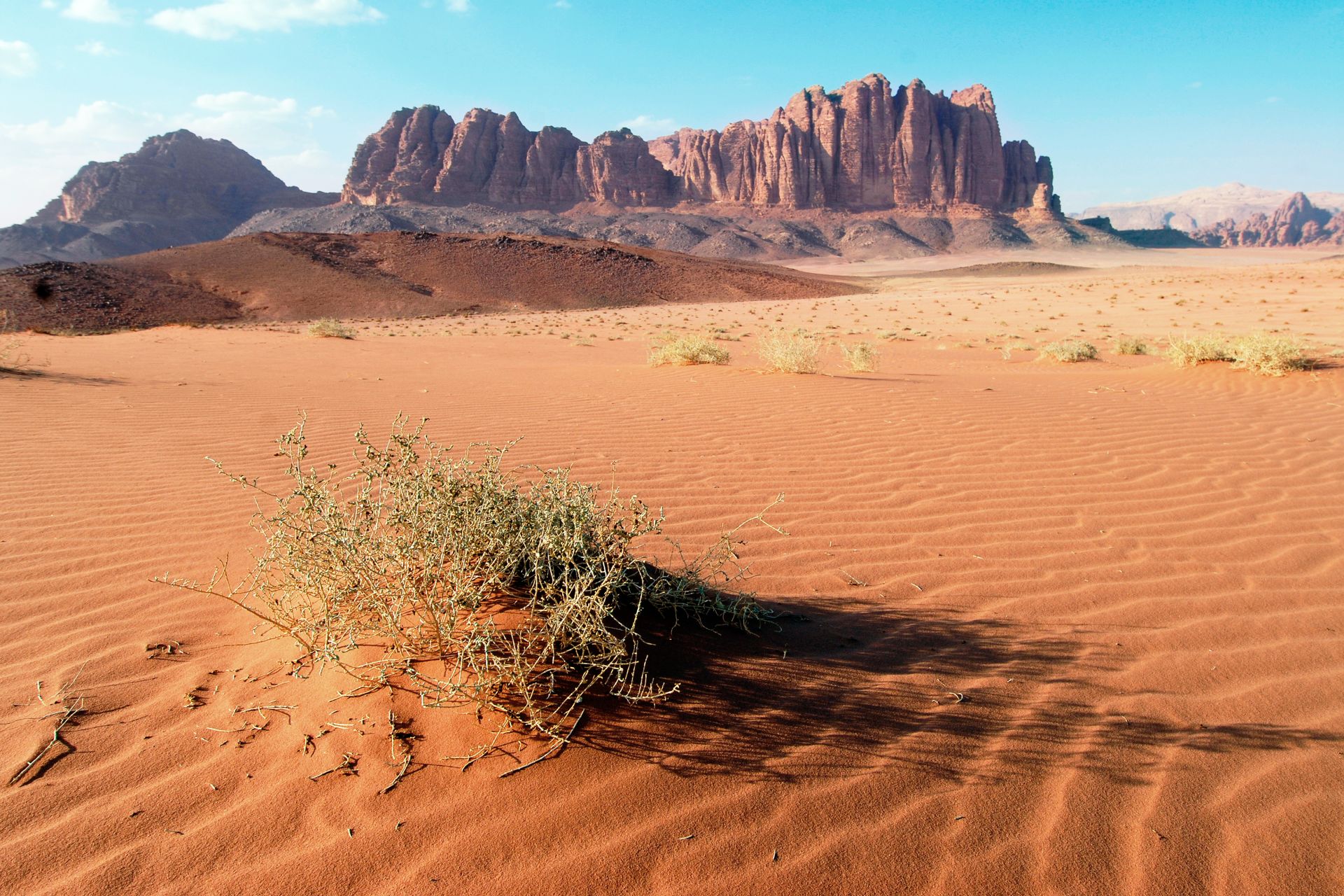
12. Getting Rescued
While you are waiting for rescue, the most important item you can have is a mirror. A mirror or any reflective surface can be used to signal planes as they fly over. The reflective surface of a mirror can be used to signal a plane from beyond the horizon.
Signals
- Use as many signals as you can to accelerate the rescuing process. Audible or visible, the signals can attract the attention of any person in your vicinity, and they will come to save your life.
- Burning a fire is another great idea to draw the attention of airplanes and helicopters flying above you. If you have a tire to burn, the black smoke will be visible in miles.
- Make sure you put on brightly-colored clothes to be as visible as possible.
- Give out loud outcries in packs of three or whistle three times. Beep your car horn (if you are lost with a car) or shoot your gun, but make sure you leave some shots for hunting.
- If you are with a car, stay nearby: you are more visible together.
- Stay where you are if you know the rescue is coming or are uncertain about where to go. If you know the way, go ahead, but leave a note in your vehicle and write where you are to travel, date it, and sign.
- Make your shelter visible to maximize the chances of survival while you are sleeping inside of it.
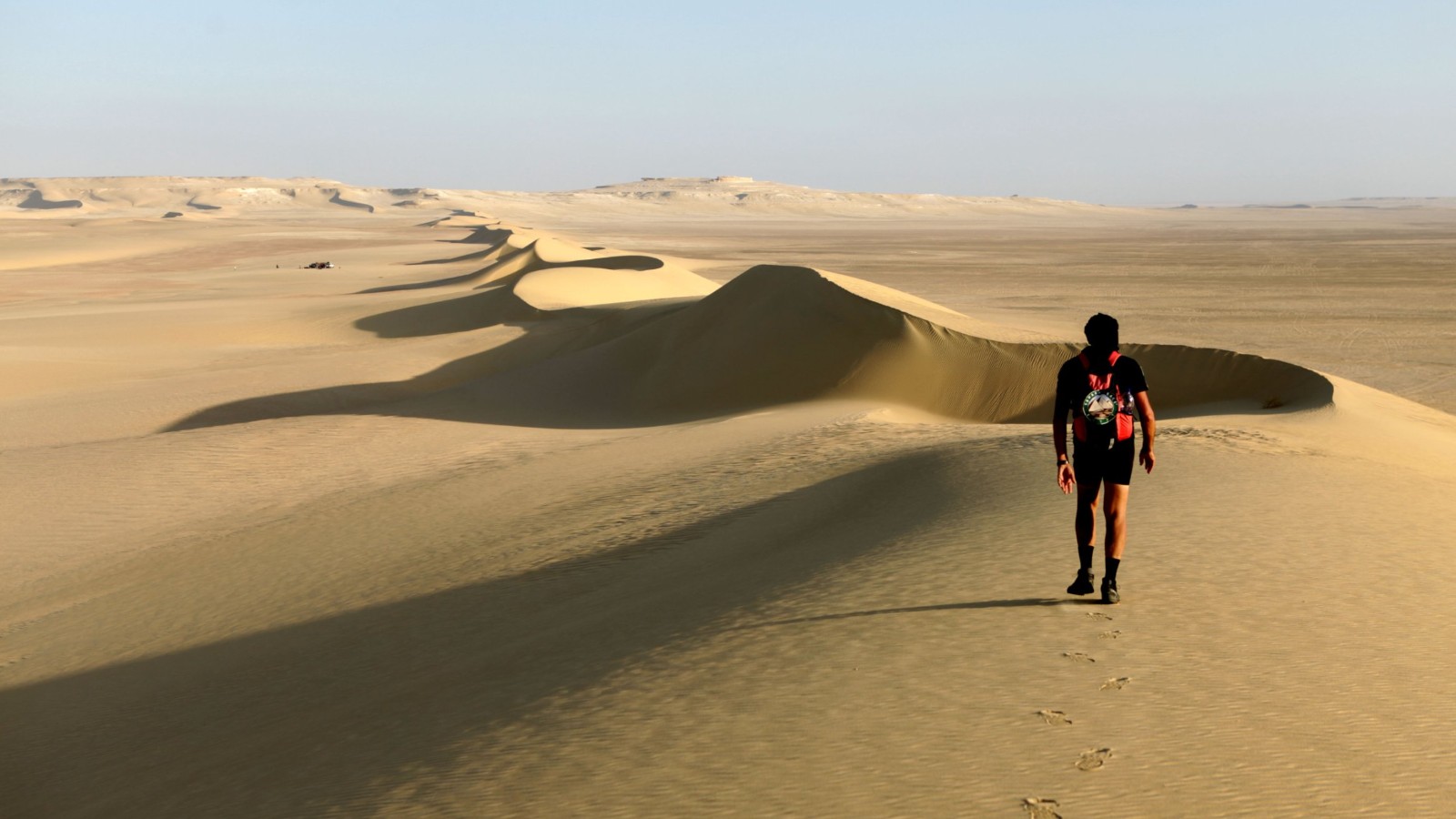
13. Be prepared
Preparedness is the best answer to the question, "How to survive in the desert?" People lost in different places around the United States and across the world have more chances to survive if they are initially prepared. Miraculous news articles that cover stories of desert survival just tell us that the better you train and prepare, learn survival techniques, know at least one way to finding water in the desert, aware of the danger from solar radiation, and know how much water you should drink per day, the higher are your chances to get away from the desert safely.
Pack up
- Minimize the loss of sweat by carefully choosing clothes before your trip
- Your skin must be as covered from the rays as possible
- The clothes must not be heavy and preferably made of cotton
- Don't forget a windbreaker and a hat to cover your top from overheating
- Keep your eyes safe by wearing sunglasses
- You will need something warm during the night in the desert
- Avoid sweat loss
- Wear light-colored clothing to reflect sunrays and save you from heat
- Take some tools or weapons with you
- Take enough water to keep yourself hydrated for as long as possible
- It is advisable that water be divided into separate containers and stored in a shade
- Bring nutritious but not very sizeable foods like energy bars or pemmican. DO some research of the area you are heading to and find out about the most nutritious meals
- Take some food containing salt to prevent overheating and exhaustion
- Remember that water sources are of higher priority than food. If you fail to find water, you are dead shortly, so consider taking a lot of it with you: it is a matter of life and death.
Prepare for Cold Nights
It is scorching in the daytime heat in the desert, but it can get cold at night. Warm clothes or an emergency blanket with a sleeping bag will be of much assistance. Warm clothing will increase your chances of survival greatly. Read on and find out how to survive in the desert if you have a survival kit.

14. Survival Kits
A solid survival kit is a must if you want to be safe in any circumstances. It can contain a knife, a piece of soap, a water container, medicines, blankets, a compass, and more. It should not be heavy and contain odd helpless items. In our article, we provide people with the top of the basic contents of a robust survival kit every person should have before traveling in desert areas:
- emergency blankets
- rope
- water purification tablets to avoid dehydration
- first aid kit
- alcohol wipes
- firestarters
- flashlight or LED headlamp
- knife to craft and protect from wild animals
- compass
- signal mirror
- SPF cream against UV rays
- gloves
- sunglasses and a dust mask, a hat or a bandana for windy times
And so much more. We cannot cover every crucial article you need to take with you on your trip in desert conditions.
The success of your survival effort will depend on what person you are, your plan, the condition of your vehicle, and your ability to find or make water. Stranded away from the world, you should find water to avoid dehydration, cover your head from the heat, avoid dangerous animals, search your site for anything or anyone edible, give signals to attract someone, and be as practical and calm as you can.
We hope that our article can help people understand how to survive in the desert better. Someone may come up with more specific recommendations, but we are sure that following the tips we wrote about in our guide will play an important part in your being rescued.

